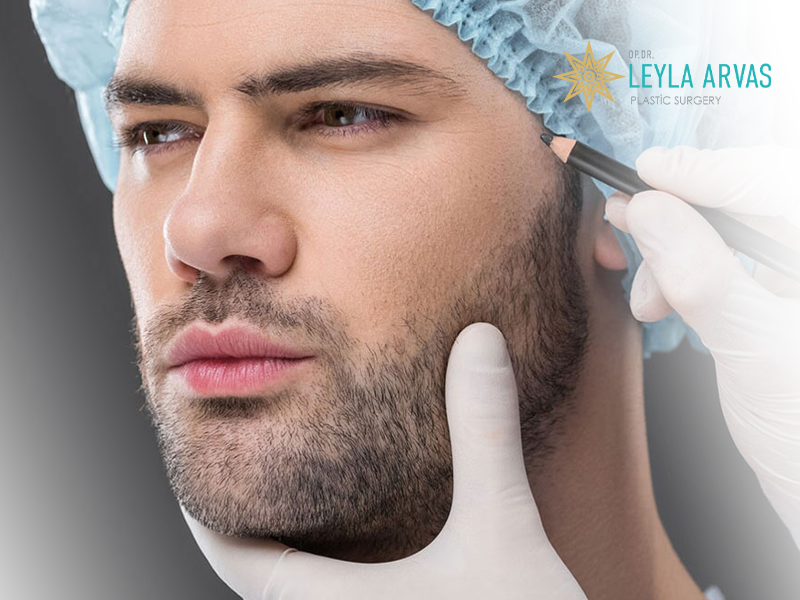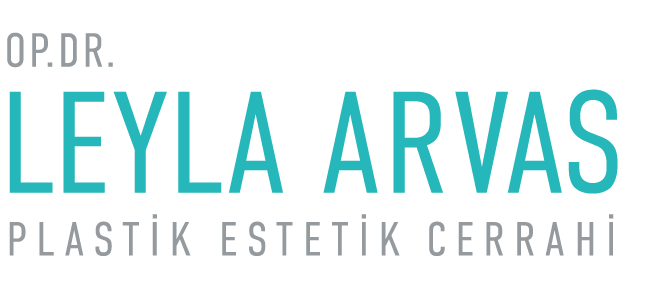The beard and mustache of men are one of the most crucial components that enhance their self-confidence. Men who have trouble growing a mustache or beard may be affected by congenital issues or later hormonal issues.

The only treatment for guys who lack a mustache and beard is beard and mustache transplantation. Similarly, beard transplanting can address the issue of the beard not sprouting hair. Hair follicles in the neck are used for beard and mustache transplantation, just like with hair transplantation.
One method used to treat males who lack the ideal beard and mustache thickness genetically or structurally or who have cavities in the beard and mustache area as a result of stress, hormonal imbalances, or medication usage is beard and mustache transplantation. The self-confidence of the person who has the desired appearance is restored and he feels more at ease in social situations as a result of the beard and mustache transplantation. The rest of the article goes into great detail regarding beard and mustache transplanting, which is popular today because it produces results that are both natural and pleasing.
What’s Beard and Mustache Transplantation?
The method of transplanting healthy hair follicles from the patient’s body to the desired beard and mustache area is known as beard and mustache transplantation. Although it differs according to the person, the FUE planting technique is typically used. After the treatment, the individual has the thick beard and mustache he desires permanently, and it is also possible to remodel the unattractive parts of his beard and mustache.
Men typically have the surgery because they lost their beards. Moreover, it can hide burns or scars. Our confidence can be significantly influenced by how we look. Losing facial hair might have psychological effects on us. Many people who have the surgery notice a significant improvement in their confidence.
By happy accident, facial hair loss can be permanently fixed with beard and mustache transplantation. At this time, we are happy to announce that we can confidently offer top-notch services to help you get over your lack of facial hair or loss.
What Causes Facial Hair Loss?
There are numerous factors that can contribute to facial hair loss. The most frequent reasons for facial hair loss include infections, ringworm, psoriasis, sores, inflammation, and inflammation.
The process of inflammation is intricate and dynamic, including numerous immune cell subtypes, clotting proteins, and signaling molecules. A pathogen entering your body and multiplying there is referred to as an infection. In the meantime, inflammation is the body’s defense mechanism against infection.
A skin illness known as ringworm is frequently brought on by a fungus. Because it can result in a circular rash that is typically red and itchy, it is known as a “ringworm.” Ringworm can affect anyone. The fungus that causes this infection can live on surfaces, clothing, towels, and other household items.
Skin cells can multiply up to 10 times more quickly than usual when someone has the skin condition psoriasis. As a result, the skin develops into reddish bumpy patches that are coated with white scales. Yet, the majority of them develop on the scalp, knees, elbows, and lower back. They can grow everywhere.
Any soft tissue in your mouth, such as the lips, cheeks, gums, tongue, floor, and roof, may develop sores. You can also get mouth sores on your esophagus, the tube that connects to your stomach.
If there is anything else that is contributing to your hair loss, we will let you know about it. Our physicians are knowledgeable authorities in their fields. Furthermore, metabolic conditions and hormonal issues might lead to facial hair loss. It’s crucial to identify the root of your facial hair loss before the operation. When one of our experts examines you before the procedure, we will give you the best diagnosis possible.
Are You A Good Fit For Beard Mustache Transplantation?
To have a different beard and mustache shape that blends in with the rest of the face, which is prone to cavities brought on by stress, burns, and shedding as a side effect of some medications, and which lacks the desirable bushy appearance because of hereditary, structural, and hormonal causes. In terms of general health, those who desire a beard and mustache but are unable to grow one due to regional hair loss, who experience decreased self-confidence as a result of the appearance of their beard and mustache, and who withdraw from social activities are not candidates for beard and mustache transplantation.
Anyone who lacks a full beard or mustache as a result of surgery, injuries, previous hair removal, or genetic diseases is eligible to get beard and mustache transplants.
After the consultation, our experts will decide if you are a candidate for beard and mustache transplantation. After this session, they advise having the surgery. There are no age restrictions for the procedure as long as our experts believe that you are a good candidate. There is no minimum or maximum age for the procedure.
How Does Beard and Mustache Transplantation Work?
The patient is thoroughly checked prior to the transplantation of the mustache and beard. It is determined during this inspection where the donor location will be and how many strong roots the transfer area needs. The transplantation of the mustache and beard can then begin providing the patient’s general health is deemed adequate. The application area is given a local anesthetic prior to the process. In this manner, the patient experiences no discomfort whatsoever throughout the process. The healthy roots that were extracted one by one using the FUE technique from the donor area are preserved in a particular solution once the numbness has entirely subsided so they can retain their vitality until the transplanting procedure. Once the required quantity of roots has been obtained, each one is applied individually to the person’s beard and mustache. The bushy beard and mustache appearance that will look the most natural and complement the person’s facial features is obtained once the recovery process from the treatment is complete.
Benefits Of Beard and Mustache Transplantation
It enables the wearer to maintain a long, bushy mustache and beard. You can shape the beard and mustache region however you like. It is a painless and painless process because a local anesthetic was applied before the procedure.
After the operation, you can resume your normal activities right away. Participation in the social environment rises when the lost self-confidence is rebuilt. The healing time is extremely brief. The individual can then style his mustache and beard by shaving however he pleases. It is a solution for those who wish to look more manly, for people who have lost their beard and mustache hair as a result of an accident, or for people whose hair loss causes gaps in their beard and mustache. The intended outcome is attained quickly because the face area has strong veins and blood flow.
How Many Sessions Do You Need For Beard And Mustache Transplantation?
The hair roots from a transplanted mustache retain all of their original characteristics. The growth of mustaches is still steady and healthy. As a result, you should cut your mustache frequently. Too much mustache transplantation prevents healthy feeding of the hair follicles. In order to support the feeding of the hair follicles, the frequency of mustache transplantation should be sufficient.
Mustache transplanting is carried out locally if there is a lack of hair in a particular location of your mustache. After the initial mustache transplant, it is advised to wait 4-6 months before having a mustache transplant in another area.
The transplanting of the mustache and beard is done individually. However, the entire planting process is finished in a single session, save for extremely unusual circumstances, as the required number of healthy root plantings is typically sufficient to be planted in a single session.
Possible Risks And Side Effects Of Beard And Mustache Transplantation
It is a fairly risk-free surgery when carried out by specialists in the field of beard and mustache transplantation, and any minor side effects are tolerable and go away on their own within a short period of time. Some minor side effects include:
- Discomfort
- Redness
- Bruising
- Swelling
Things To Consider About Beard And Mustache Transplantation
Any unintentional movement made after the beard and mustache transplantation treatment has been completed can harm the freshly transplanted hair follicles and prevent the intended outcome from being realized. Patients should be aware of a few things after beard and mustache transplantation for this reason. among those are:
After a beard and mustache transplant, the area shouldn’t be exposed to water for the first 24 hours. The beard and mustache area can appear dark red during this time; however, following the first wash, the appearance returns to normal.
As minor adverse effects of the transplanting process, redness, and crusting may appear in the application area. These minor adverse effects, however, quickly go away on their own, and the crusts should not be touched or attempted to be removed by hand in order to protect the healthy roots during the healing process. It should be anticipated that they will naturally shed.
Particularly within 2-3 days following the surgery, there may be some little redness in the form of acne. By one to two weeks, this look is fully gone. No cosmetic item, lotion, etc., should be used prior to the control examination and doctor’s approval. For a period of 10 to 14 days, care items shouldn’t be applied to the application region. The only free products are those that the doctor has prescribed.
The freshly transplanted mustache and beard roots should be lying on their back for at least 3 to 4 days following the procedure to prevent harm. The roots may be harmed if it is resting on their side or face down, which could prevent the growth of healthy hair as desired.
Does Shock Loss Occur After Beard And Mustache Transplantation?
After the beard and mustache transplantation surgery, the freshly transplanted hairs begin to shed after the second week, and then permanent hairs start to develop, just like after a hair transplant. This process is perfectly typical. Remember, at this time there should be no involvement. The doctor should be contacted frequently during the healing process, and nothing should be done without his knowledge. The final beard and mustache area usually appear 4 to 8 months after the beard and mustache transplant procedure, though this varies from person to person. For an average of two years, hair follicles continue to grow and multiply.
Beard And Mustache Transplantation Prices
Depending on the patient’s current beard and mustache condition, the amount of transplantation required for these areas, the number of sessions, the technique to be used during the transplantation process, the doctor’s experience, and the clinic’s equipment, the cost of beard and mustache transplantation varies significantly. Moreover, the Ministry of Health’s approved facilities is not permitted to list costs on their websites. To find a solution to these issues, our patients who have not been able to grow out the full beard and mustache they desire due to genetic or hormonal factors, or who experience gaps in their current beard and mustache, can get detailed information and an appointment by calling our clinic at 02122414624.
